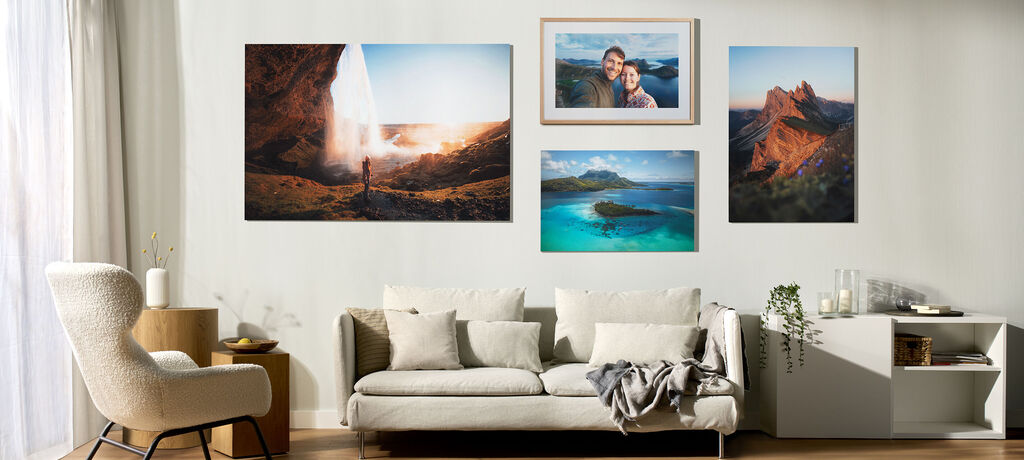
Photography tips
Photographing churches and cathedrals: a complete guide
13th August 2025
Churches and cathedrals present endless opportunities for photographers, with their towering architecture, intricate details, and powerful atmospheres. These sacred buildings have been inspiring photographers for as long as cameras have been around, and their ability to convey history, faith, and artistry makes them truly unique subjects.
In this comprehensive guide, we’ve collaborated with professional photographer Kevin Buckland from the Basingstoke Camera Club. Kevin has shared expert insights and practical advice to help photographers of all levels enhance their skills and make the most of their church and cathedral photography.
From perfecting lighting techniques to capturing the details that make these structures so iconic, let’s explore how to take impactful photographs of churches and cathedrals.
Why you should photograph churches
Few subjects are as visually striking as churches and cathedrals. Their size, symmetry, textures, and cultural significance combine into a perfect storm of photographic possibilities. Unlike modern buildings, churches often feature rich details like stained glass, carved stone, and ornate ceilings that allow you to experiment with creative compositions and lighting effects.
Photographing churches isn’t just about capturing their grandeur; it’s about telling a story. Whether it's by focusing on the spiritual atmosphere within the space, the human elements that breathe life into it, or the sheer architectural genius of their design, these images are full of meaning and impact.
Plan ahead: house rules and etiquette
Churches are still active places of worship, and understanding the rules of engagement is essential for every photographer.
- Check local policies: Research whether photography is permitted (some churches prohibit it), and identify any restrictions, such as rules against using flash or tripods.
- Be respectful: Maintain a considerate approach—use a mirrorless camera with a silent shutter when possible to avoid distractions.
- Work around events: Be mindful of ceremonies such as weddings or services that may limit your access to certain areas or photo opportunities.
For example, at St Paul’s Cathedral in London, photography is permitted only outside of service times, and flash is prohibited. Similarly, places like York Minster—known for its world-class stained glass and towering central tower—provide photographers with ample opportunities for both interior and exterior shots but have guidelines to follow. Check each location’s policies before visiting to ensure a smooth photography session.
PHOTO IDEA: Include an exterior shot of a Cathedral at golden hour to establish grandeur and scale.
Tips for the best exterior shots of churches
Photographing the exterior of a church or cathedral allows you to appreciate both its relationship with its surroundings and its architectural magnificence.
1. Use lighting to create atmosphere
Lighting plays a key role in capturing the presence of these buildings. Professional advice recommends shooting in the early morning or late afternoon for soft, golden light that adds warmth to the natural textures of stone and wood. Don’t shy away from unusual atmospheric conditions like stormy skies or snow—these can frame the church in a dramatically different way.
- Seasonal tips: Snow-covered rooftops in winter or blooming flowers in spring can offer seasonal storytelling opportunities.
- Dynamic environments: Surrounding cityscapes or countryside can frame your subject beautifully, such as the water meadows framing Salisbury Cathedral, or Florence’s Santa Maria del Fiore viewed from hillside vantage points.
PHOTO IDEA: An imposing cathedral framed by stormy skies or blanketed in soft snow.
2. Use a wide-angle lens and leading lines
Wide-angle lenses are ideal for photographing large churches or cathedrals. Leading lines—like a church pathway, fence, or a row of trees—can enhance your composition, guiding the viewer’s eyes straight to the subject. Experiment with symmetry and strong verticals for maximum visual impact.
Mastering interior shots: low light and intricate details
Photographing church interiors can challenge even the most experienced photographers due to the low-light environment, but this is where creativity thrives.
1. Optimise your camera settings for low light
Interior lighting relies heavily on natural sources, like stained glass windows or overhead light streaming through high arches. Kevin Buckland advises shooting in RAW format for ultimate flexibility in post-processing and playing to your camera’s strengths:
- ISO settings: Increase ISO to boost sensitivity, but edit later to reduce noise.
- Shutter speed: Use longer exposures for brighter results, utilising a tripod to keep your shot sharp.
- Aperture: Keep the aperture wide (smaller f-number) to let in more light—a must for focusing on darker spaces or intricate close-ups of carvings and texture.
Church layouts lend themselves perfectly to symmetrical compositions, with their long aisles, repeating columns, and lofty ceilings. Look up and experiment with the patterns hidden in the vaults or domes for uniquely framed shots.
For larger churches, be mindful of converging verticals in your composition to avoid distortion. If necessary, correct this in post-processing.
PHOTO IDEA: A symmetrical shot of pews leading up to an ornate altar, showing intricate stone carvings or stained glass above.
3. Get creative with stained glass and textures
Stained glass windows are a signature feature of many churches and cathedrals, offering bold patterns and stunning colour contrasts. To bring them to life:
- Use a medium telephoto lens to isolate the intricate design.
- Experiment with patterns of light cast on the floor or wall.
- For a unique twist, try intentional camera movement (ICM) by zooming or tilting mid-shot to create an abstract, painterly effect.
Don’t forget to explore other textural details, such as carved wood pulpits, inscriptions in stone, or decorative organ pipes. These details are what bring the story of the church to life.
Display or share your church photography
Once you’ve perfected your shots, showcase your work in a portfolio photo book, and create a professional-style presentation for your best architectural images.
For larger statement pieces, turn your favourite church photographs into a stunning piece of wall art. Aluminium Prints, for example, emphasise the bold colours of stained glass and the textures of stone in a modern display format.
Finally, if you want to experiment with similar subjects, check out our still life photography tips for more ideas on capturing intricate details and textures.
Why churches are a must-photograph subject
Photographing churches and cathedrals invites you to explore the intersections of art, architecture, and history. These awe-inspiring spaces provide endless creative opportunities, whether you’re experimenting with light, focusing on intricate details, or creating a compelling narrative through your shots.
Share your creations and photography talent with us by entering the CEWE Photo Award Competition, or preserve your best work with a photo book or large-format Wall Art print.
Start telling the story of these incredible buildings one frame at a time.










